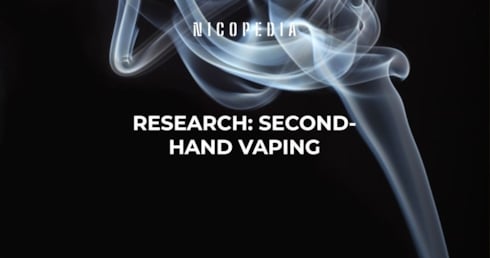Second-Hand Vaping Has Minimal Impact

"The study confirms previous research. The amount of nicotine that children and others in the surroundings are exposed to is negligible. It is highly unlikely that 'passive vaping' poses a real health risk, but users should, of course, respect that others may dislike the smell or sight of aerosol from e-cigarettes,"
Measured Nicotine Levels in Children
A total of 1,777 American children aged 3–11 participated in the study. The children were part of a larger survey via the National Health and Nutrition Examination Survey (NHANES) and were selected based on whether they had been exposed to tobacco smoke or vapor in their homes over the past seven days. A control group not exposed to either smoke or vapor was also included.
All participants were interviewed in their homes and tested via blood samples a week after the visit. The researchers then analysed the children’s levels of cotinine – a biomarker that indicates nicotine levels in the body.
Smoking is Significantly Worse than Vaping
The results showed that children exposed to tobacco smoke absorbed significantly higher concentrations of nicotine compared to children exposed to vapor. Children in smoking households absorbed 0.494 micrograms per litre, while children in vaping households absorbed 0.081 micrograms per litre. Children not exposed to either had lower absorption than the others, but not zero, as nicotine is typically present in the air regardless of the environment. These children absorbed 0.016 micrograms per litre.
“The results show that a shift from smoking to vaping indoors can significantly reduce, but not eliminate, children's second-hand exposure to nicotine and other harmful substances,” the researchers wrote in their analysis.
Vapers Absorb Nicotine Better
According to the researchers, the findings align with earlier laboratory studies showing that vapers absorb 99% of the nicotine inhaled through vaping. The results also demonstrate a significant technical difference between smoking and vaping.
“When it comes to cigarette smoking, the environment is exposed to both the exhaled smoke and the smoke that comes directly from the burning cigarette. E-cigarettes only generate aerosol that affects the surroundings when the vaper exhales the vapor from their lungs,” the researchers said in a press release from University College London.
Not Just Nicotine
According to Dr. Harry Tattan-Birch from the UCL Institute of Epidemiology & Health Care, the study is important at a time when many misconceptions exist about the relative risks of smoking and vaping.
"Our study shows, using real-world data rather than an artificial lab setting, that nicotine absorption is much lower from second-hand vapor than from second-hand smoke. Nicotine itself is not the most concerning risk factor, but this demonstrates what the highest possible exposure from second-hand vaping could be. We can assume that exposure to the harmful non-nicotine substances in vapor is likely even lower,"
Be Cautious around Children
The researchers argue that these results are important to consider when authorities make decisions about smoke-free environments. They assert that there is no doubt that smoking has a very negative impact on the surroundings, while vaping likely has a limited effect. However, they urge caution.
“There is much to suggest that concerns about passive vaping might be somewhat exaggerated, as the risk of exposing the surroundings to toxic substances is likely very low. At the same time, we confirm that the risks of smoking indoors around children are significant and should be avoided at all costs. But since second-hand vaping still exposes children to more harmful substances than no vaping or smoking at all, it is best to avoid vaping indoors when children are present,” says Professor Lion Shahab, of the UCL Institute of Epidemiology & Health Care and co-author of the study.
